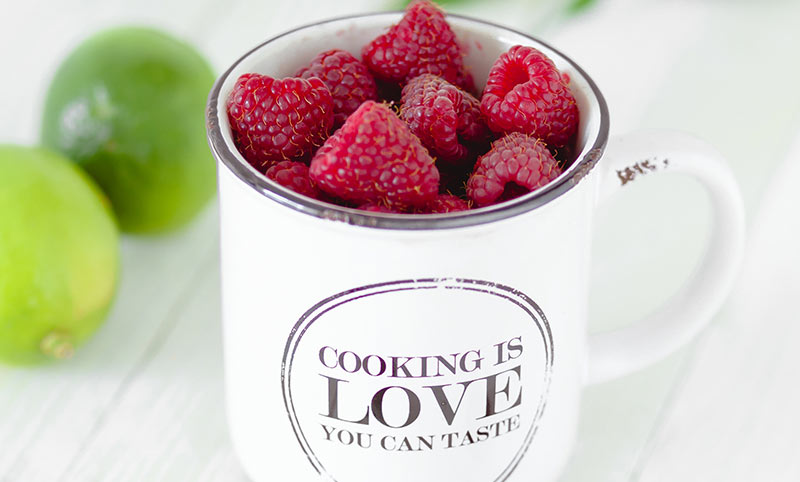
How to Make Your Own Baby Food (for Perfectionists and the Rest of Us)
Becky swipes through Instagram and pauses at a former classmate’s humblebrag, “So tired after making Sweet One’s #organic #homemade #babyfood for the next month, but it was a #laboroflove. #soworthit” Her perfectly filtered photo shows her flawless complexion cheek-to-cheek with “the Sweet One” and gleaming jars of Whole Foods-worthy baby food in the foreground.
Becky shakes her head and clicks off the phone. Her own baby is probably hungry. For storebrand peas, probably not. But who has time to make baby food except former valedictorian overachievers?
Comparison is exhausting.
Thankfully, making baby food really isn’t. So if you’ve ever felt “less than” because you thought your sweet one was doomed to overpriced jars of tasteless goop until his first dentist appointment, read on.
What You Need
To make your own baby food, you really don’t need much. Depending on where you live, how much storage space you have, and how much you like acquiring gadgets that you’ll one day chunk in a donate box or sell for pennies at a yard sale, making your baby food can be embarrassingly simple or Insta-worthy intricate.
Here are a variety of tools, listed in order of simplicity:
- fork
- mortar and pestle
- baby food mill, hand cranked
- Magic Bullet (my personal favorite)
- full size food mill (handy if you also plan on making homemade tomato sauce or grape jelly sometime)
- blender or food processor
- baby food maker and squeeze pouch kit
Of course, that’s not including the ancient method of making baby food by chewing it up yourself, spitting it out, and sticking it in your baby’s mouth. Babies better be happy they get to live in the 21st century.
As for what foods you need to get started, same rules apply. You can make it as simple or as complicated as you please.
The simplest way to procure baby food is to mash up whatever you’re eating, and feed it to your baby. It’s a good idea to salt and pepper your food after taking out the baby’s portion. And remember: no honey if the baby is under a year.
If you’re in project mode, however, and you want to get your own month’s worth of baby food squirreled away, no problem. Decide what you want your baby to eat.
Here are some super-easy foods to try:
- Butternut squash, cut in half and baked in the oven (so easy)
- Baked sweet potatoes
- Avocado (mixed with banana is a great way to chunk up a skinny baby)
- Banana, mashed
- Oatmeal (yes, the kind you eat, as long as it’s unsweetened or only sweetened with juice)
- Pureed peas, carrots, broccoli, rice, etc.
- Mashed strawberries (but only in small quantities)
Best Age to Get Started
No matter how excited you might be about starting your own baby food factory, at least wait until your baby is four months, and ideally, five months. Starting before your child’s digestive system is ready can lead to choking, constipation, and in some cases, allergies.
Also, you’ll want to start your baby on something simple and predominantly milk-based, like rice cereal, before moving to more complex solids. The first time a baby encounters a spoon is a befuddling experience. It helps to wait until your child has somewhat mastered swallowing more solid food before you confuse things with colors, textures, and flavors.
The Basics
When you’re making your own baby food, you have the potential to give your child food much healthier than anything you could buy on the store shelves. Fruits and vegetables are packed with awesome nutritive properties, and careful preparation can prevent those benefits from being cooked away or washed down the drain.
Use as little water as needed
If you cook your broccoli or spinach in a quart of water that will need to be strained and drained, you’ll be losing valuable nutrients your child needs. Instead, steam your green vegetables in only a little water, slowly until tender enough for toothless grins to swallow.
Larger vegetables like potatoes and squashes are even easier. Simply bake them, then scoop the flesh out of the peels, and puree. It’s so easy.
You can season your baby’s foods lightly, but avoid anything like salt, pepper, garlic, and anything else that masks the true flavor of the food or could be irritating.
A Few Words of Caution
Go slowly. Don’t let your excitement about watching how much baby loves your cream cheese mashed potatoes overcome your caution. Always introduce new foods in tiny amounts to discern if the child could have an allergic reaction.
At the same time, try not to make the common mistake of assuming your baby will be picky or won’t like certain foods. If it’s a healthy vegetable your child needs, don’t be afraid to offer it. Even if your child appears to dislike a certain food doesn’t mean it belongs on the bad list. Kids make all sorts of faces when experiencing new flavors and textures. Assume your child will learn to like any food, as long as your face doesn’t clue them in that “Mom thinks this is disgusting, so why is she prying it into my gums?”
Even if a child has appeared to dislike a food in the past, it’s a good idea to reintroduce the food again in a couple months. Sometimes it just takes acquiring a taste for a certain food, and sometime that happens more gradually than others.
If you can train your child to appreciate a wide variety of healthy foods, you can prevent a lifetime of bad choices and poor health.
Even if you weren’t class valedictorian.
